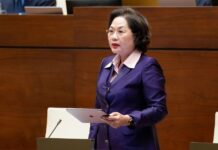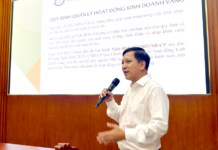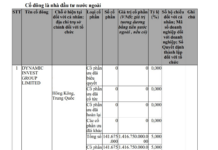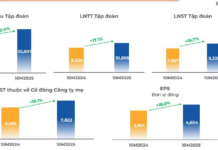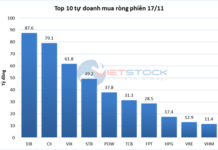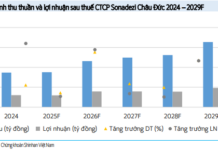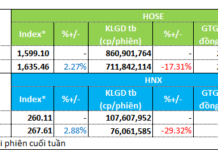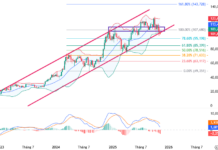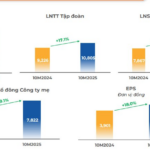On May 22, 2024, the SBV lent nearly VND 25,000 billion to 9 market members through the collateralized lending channel (OMO) with a term of 7 days and an interest rate of 4.5%/year. Compared to the previous session, the SBV’s OMO lending scale increased by more than 9 times and the lending interest rate increased by 0.25 percentage points, from 4.25%/year to 4.5%/year.
This is the second time the SBV has raised the OMO interest rate in the past month. Previously, the SBV raised the lending interest rate for collateralized securities from 4% to 4.25%/year in the April 23 session.
Also on May 22, the SBV issued bills worth VND 650 billion with a term of 28 days, with the winning interest rate increasing from 3.9%/year in the previous session to 4%/year, the highest since March 2023.
There is no liquidity risk in the market

Mr. Dinh Duc Quang – Executive Director of Monetary Business Division, UOB Vietnam
|
Regarding this move, Mr. Dinh Duc Quang, Executive Director of Monetary Business Division, UOB Vietnam, assessed that the market liquidity is stable.
The open market operation interest rate is used by the management agency to regulate the liquidity of VND in the market. This is a regulatory system that has been built over the years, and in recent years, this tool has been very smooth in injecting liquidity into the market through open market operations, or withdrawing liquidity from it through the issuance of bills when the market shows signs of surplus.
The SBV’s move on the afternoon of May 22 was a parallel of two activities, including increasing the OMO interest rate by 0.25%/year and issuing bills. Obviously, the two channels for regulating VND liquidity are operating in parallel, not because the market lacks liquidity and the SBV has to inject liquidity into it.
Recently, some banks have also increased their deposit interest rates, but the increase is not significant, mainly for short-term maturities of less than 12 months, with an increase of about 20-30 basis points. Although interest rates have increased, they are currently at their lowest levels in many years, even lower than pre-COVID-19 deposit rates. The average 12-month deposit interest rate is currently around 5%/year.
Regarding the system’s liquidity, the need to raise deposit rates does not indicate a liquidity risk in the market, according to UOB.
Mr. Quang stated that policies must follow market trends. Currently, the trend in the region and the world is to maintain higher interest rates for a more extended period. Therefore, Vietnam cannot go against this trend and must balance domestic interest rates to harmonize with other investment channels and global interest rates.
Savings deposits are the most popular channel in Vietnam, and commercial banks are adjusting deposit rates to balance returns with other investment channels in the market, not due to a lack of liquidity.
From the perspective of the management agency, the interest rate adjustment is also to harmonize with regional and global interest rates, not a monetary tightening or policy reversal at this time.
The market is not lacking in foreign currency
According to the Financial Markets Division of ACB, on May 21, 2024, interbank members registered to buy nearly USD 600 million from the SBV, bringing the cumulative purchase from this source to approximately USD 2.5 billion since mid-April.
Mr. Dinh Duc Quang stated that the use of foreign exchange reserves to intervene in the market is not unique to the SBV. Considering the depreciation of the VND in the first four months of this year in the context of regional and global currencies, the VND’s depreciation is average.
Since the beginning of the year, the Yen has depreciated by about 10%, the Baht by about 8%, the Ringgit by about 7%, and so on. Compared to 10 important regional currencies, the VND’s depreciation is average, and it is natural for the SBV to intervene to maintain a reasonable VND exchange rate. This is not an indication of a foreign currency shortage in the market, as central banks in Indonesia and Japan have also recently intervened strongly in their respective exchange rates.








